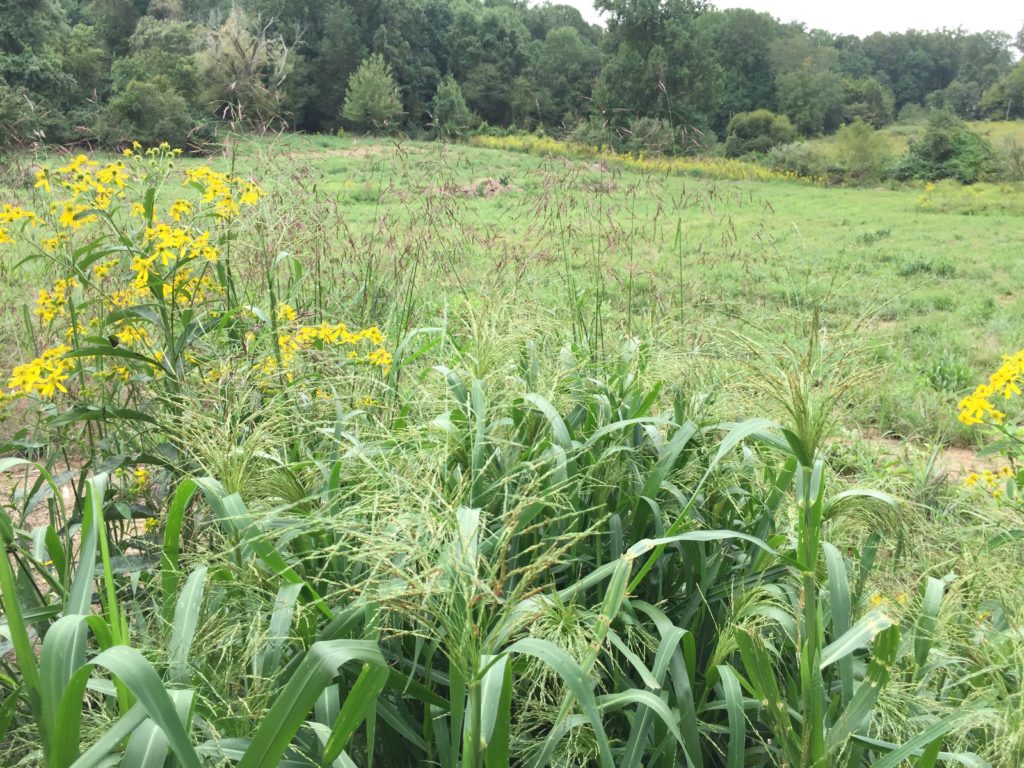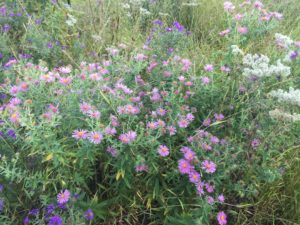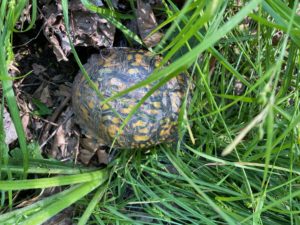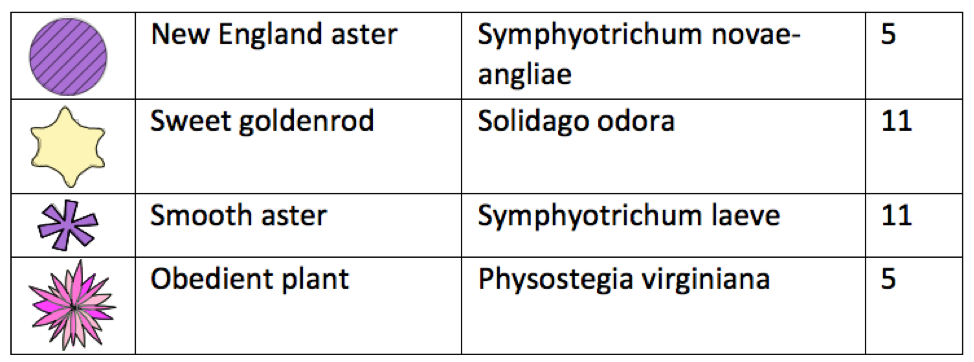A Plan for a Mini Meadow, Simplified
I have an area of my yard I call my mini meadow. It is two years old now and I love watching how it fills in. I wish I had more space like in the picture above to try out millions of flower and grass combinations. I am constantly asking myself: Do I want mostly grasses with flowers here and there like most natural meadows? Or do I want to fit as many flowers as possible since people are drawn to the color of flowers – nature’s eye candy?
The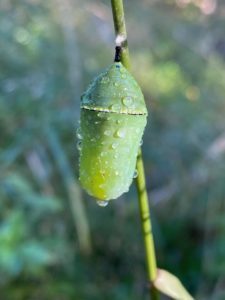 reason I’m focusing on a mini meadow is because more people can easily experiment with one due to the small size.
reason I’m focusing on a mini meadow is because more people can easily experiment with one due to the small size.
When those of us with yards reduce or convert our lawns, we do nature a huge favor by helping wildlife and creating habitat. The meadow design below is 20 by 40 feet, but it can be scaled to any size. This is quite a small area for a meadow, and easy for one person to maintain but can definitely offer a lot of support to beneficial insects, butterflies and birds. Wouldn’t it be nice for those of us with smaller yards to work together with neighbors and combine two or three adjacent yards to make a larger meadow? I haven’t seen that done before, have you? A large meadow would be so beautiful and once established, the maintenance would be easy, just a once a year mow usually in early March, and a regular check for invasive plants or pioneer trees and shrubs.
Nature doesn’t know boundaries the same way we do.
There is a neighborhood ground hog who shares my yard and those of three of my neighbors. Birds fly from tree to shrub to tree to flower garden without considering whose yard those plants are in. They have their territories too, but not the straight, artificial lines that we draw when we own property. Creatures don’t read maps. One of my neighbors put up a fence around his yard mostly to keep out the deer, he says, but I think to keep out the humans, too. I worry that the Eastern box turtles who I see make their way through our neighborhood periodically and other critters have lost their territory with his new fence, but if they are forced into my yard, they are more than welcome. I hope they make it to the right side.
The next four pictures show a mini meadow I designed which includes a plant combination of 60 percent grasses and 40 percent flowering plants.
Stepping stones could easily be added for anyone who would like to have a defined pathway through their meadow. I’ve included the list of plants by common name, Latin name and quantity. The top picture shows all the grasses, the next shows what will be blooming in spring, then summer, and the last one the fall bloomers. Some plants will overlap the seasons, and the grasses are an integral part of each season. All the plant stalks will continue to be beautiful in winter with the soft, mixed colors of cream, wheat, and shades of brown, even more so in a new fallen snow with birds flitting here and there, gathering seeds to eat. As the meadow matures from year to year, some of the flowering plants may fade from prominence or disappear completely, while others will take on a more dominant role as they mature.
I’m learning about meadows from three different sources.
Garden Revolution by Larry Weaner and Thomas Christopher, Lawns into Meadows Growing a Regenerative Landscape by Owen Wormser and a Dry to Mesic Sunny Meadow Site plant list from Earth Sangha. Their website is www.earthsangha.org. These are great sources of helpful information if you want to learn more about meadows, too.
GRASS


SPRING
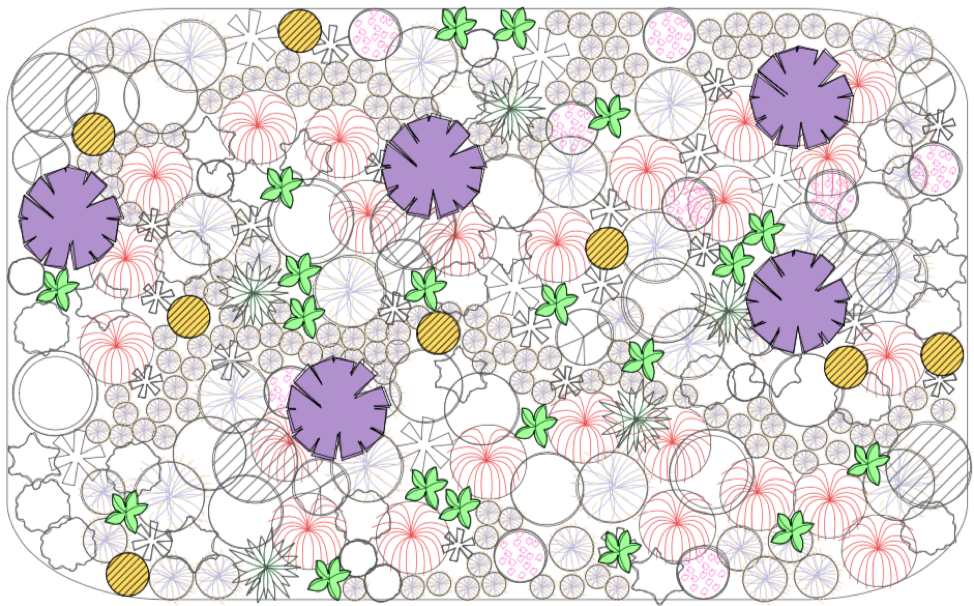

SUMMER

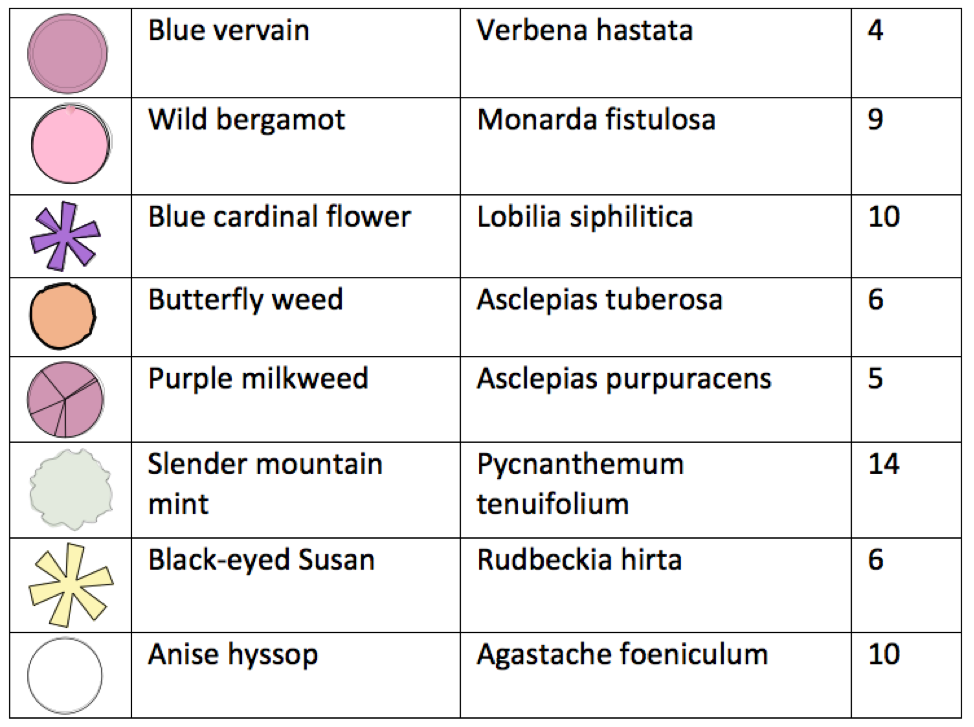
FALL
